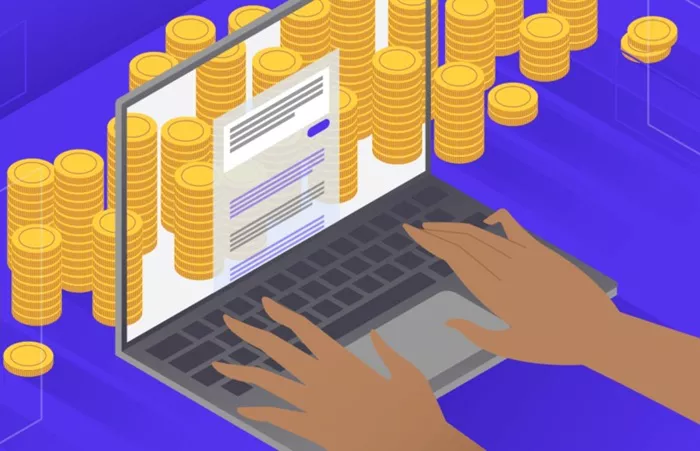Monetizing a Blogger website using Google AdSense is one of the most effective ways to generate revenue from your content. Google AdSense allows publishers to display relevant ads on their websites, earning revenue based on ad impressions and clicks. How to Monetize Blogger With AdSense? This guide will provide a step-by-step approach to setting up AdSense on Blogger, optimizing ad placements, and maximizing earnings.
Understanding Google AdSense
Google AdSense is an advertising program that allows website owners to earn money by displaying ads on their websites. These ads are generated by Google and are tailored to match the website’s content and audience. Advertisers bid for ad space, and Google automatically selects and displays the most relevant and high-paying ads.
Key Benefits of Using AdSense:
Ease of Use: Google handles the ad placement and payments, making it simple for website owners.
Relevance: Ads are automatically matched to your content, increasing engagement and earnings.
Multiple Ad Formats: You can display text, display, video, or interactive ads.
Prerequisites for Applying to AdSense
Before applying for Google AdSense, ensure that your Blogger website meets the following requirements:
Quality Content
Your blog should have original, high-quality, and informative content.
Avoid copied or duplicate content, as this can lead to rejection.
Ensure the content is well-structured, with proper formatting and readability.
Domain Age and Traffic
While Google does not have a strict domain age requirement, a blog with at least 3–6 months of regular content is more likely to be approved.
Having consistent traffic is beneficial, though AdSense does not specify a minimum traffic requirement.
Compliance With Google AdSense Policies
Your website must comply with Google’s Webmaster Guidelines and AdSense Program Policies.
Avoid content related to illegal activities, adult content, violent material, or misleading information.
Essential Pages
Google requires that your blog has important pages such as:
About Us: Provides information about your blog and its purpose.
Privacy Policy: Informs users about how their data is handled.
Contact Us: Allows visitors to reach out to you.
Terms of Service (optional but recommended).
Step-by-Step Guide to Setting Up AdSense on Blogger
Once your blog meets the above requirements, follow these steps to apply and integrate AdSense with your Blogger website:
Step 1: Sign Up for Google AdSense
Go to the Google AdSense official website.
Click on “Sign Up Now” and enter your Google account credentials.
Provide your Blogger website URL and choose your preferred language.
Accept the Google AdSense Terms & Conditions and submit your application.
Step 2: Connect Blogger to AdSense
Once your application is reviewed and approved, connect AdSense with Blogger:
Log in to your Blogger Dashboard.
Click on “Earnings” in the left sidebar.
Click “Sign up for AdSense” and follow the instructions to link your account.
If the option is unavailable, go to Settings > Monetization and enable AdSense.
Step 3: Add AdSense Ads to Blogger
There are two primary ways to add ads to your Blogger site:
Automatic Ads:
AdSense can automatically place ads across your blog using machine learning to optimize placement.
To enable automatic ads, go to AdSense Dashboard > Ads > Automatic Ads and turn it on.
Manual Ad Placement:
If you want more control over where ads appear:
Go to Blogger Dashboard > Layout.
Click “Add a Gadget” in the desired section.
Select “AdSense” and configure the ad settings.
Save the changes and preview your blog.
Best Practices for Maximizing AdSense Earnings
1. Optimize Ad Placement
Place ads in high-visibility areas, such as above the fold (the visible part of the page without scrolling).
Use responsive ad units to ensure proper display on mobile and desktop.
Experiment with different ad placements and track performance in Google AdSense reports.
2. Use the Right Ad Formats
Display Ads: Visually appealing and work well in sidebars and headers.
In-Article Ads: Blend seamlessly with blog posts, increasing engagement.
Anchor Ads: Stick to the bottom of the screen on mobile devices for better visibility.
3. Improve Website Speed and User Experience
A fast-loading blog increases user engagement and ad viewability.
Use lightweight templates and compress images to enhance loading speed.
Avoid excessive ads, as they can slow down the website and lead to a higher bounce rate.
4. Focus on High-Quality Content
Write long-form, in-depth articles on topics that interest your audience.
Update older blog posts to keep them relevant and increase search traffic.
Use SEO best practices, such as keyword optimization and internal linking.
5. Increase Organic Traffic
SEO (Search Engine Optimization): Optimize titles, meta descriptions, and headings for better search rankings.
Social Media Promotion: Share your blog posts on platforms like Facebook, Twitter, and Pinterest.
Email Marketing: Build an email list and send newsletters to drive repeat visitors.
Common AdSense Approval Issues and How to Fix Them
If your AdSense application gets rejected, consider the following common issues:
Insufficient Content: Ensure your blog has at least 20–30 well-written posts before applying.
Low Traffic: Work on increasing organic and social media traffic.
Policy Violations: Remove any content that violates Google’s policies.
Missing Essential Pages: Add About, Privacy Policy, and Contact pages.
Once you address these issues, reapply after making improvements.
Monitoring and Analyzing Ad Performance
Once your AdSense account is active, regularly monitor your earnings and ad performance through the AdSense Dashboard. Key metrics to track include:
CTR (Click-Through Rate): Percentage of users who click on ads.
RPM (Revenue Per Thousand Impressions): The amount you earn per 1,000 page views.
Ad Impressions: The number of times ads are displayed.
Use Google Analytics to track visitor behavior and optimize content accordingly.
Conclusion
Monetizing your Blogger website with AdSense is a great way to earn passive income. By following the right strategies—such as optimizing ad placements, focusing on quality content, and improving SEO—you can maximize your earnings. Remember to comply with Google’s policies and continuously analyze your ad performance for better results.
If you are patient and consistent, AdSense can become a reliable revenue source for your blog. Happy blogging!

